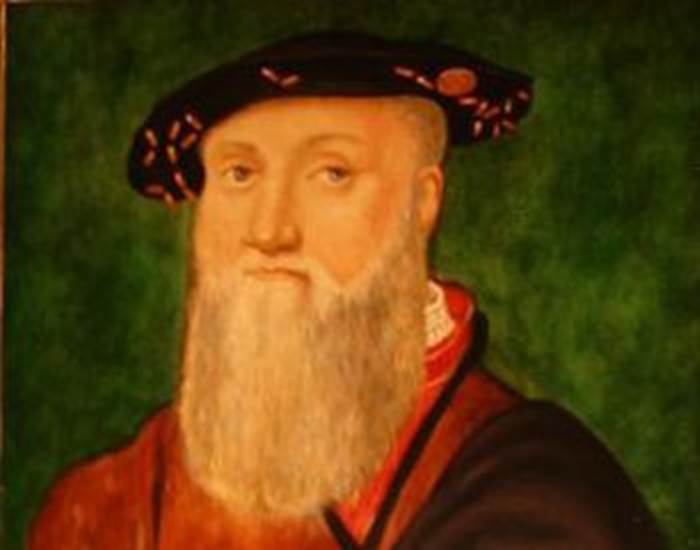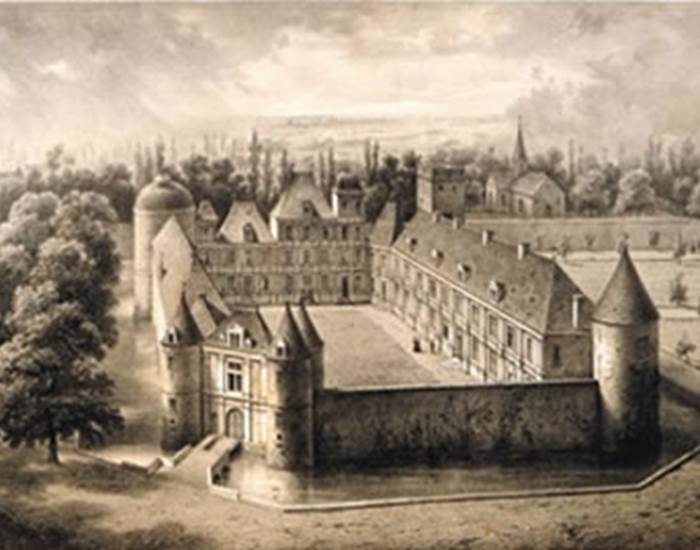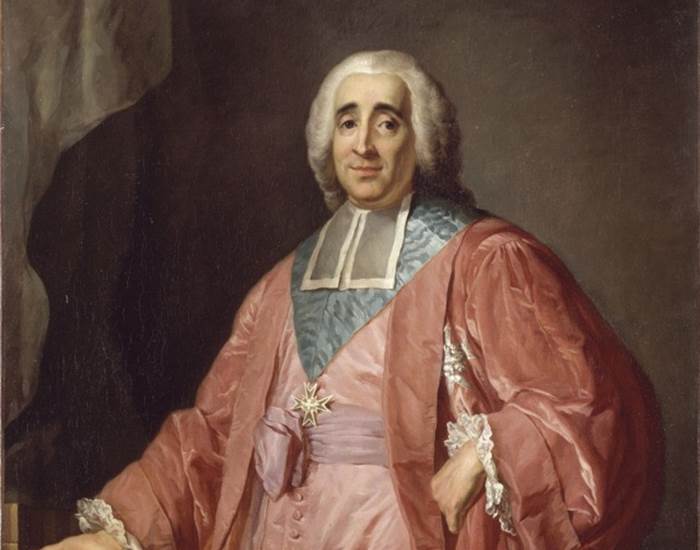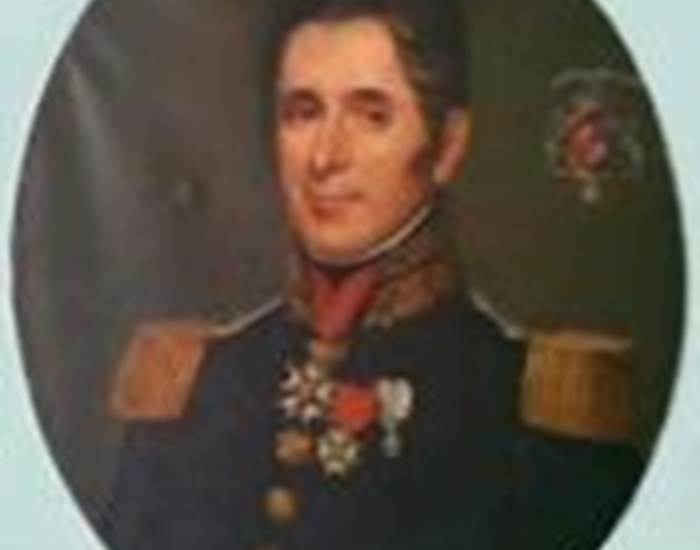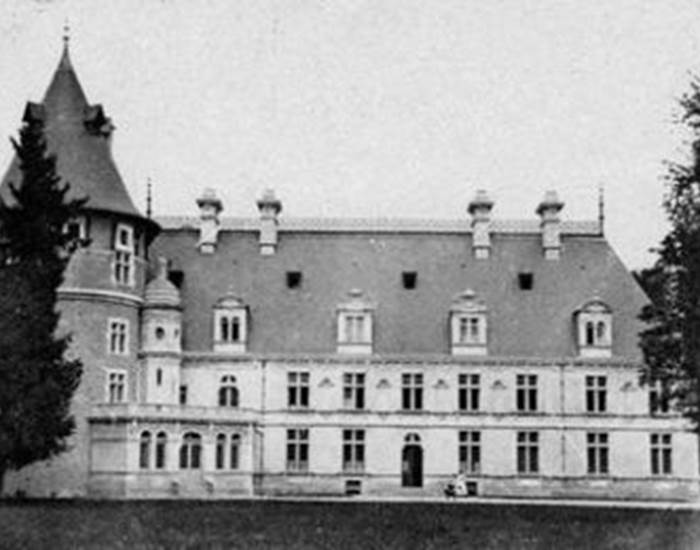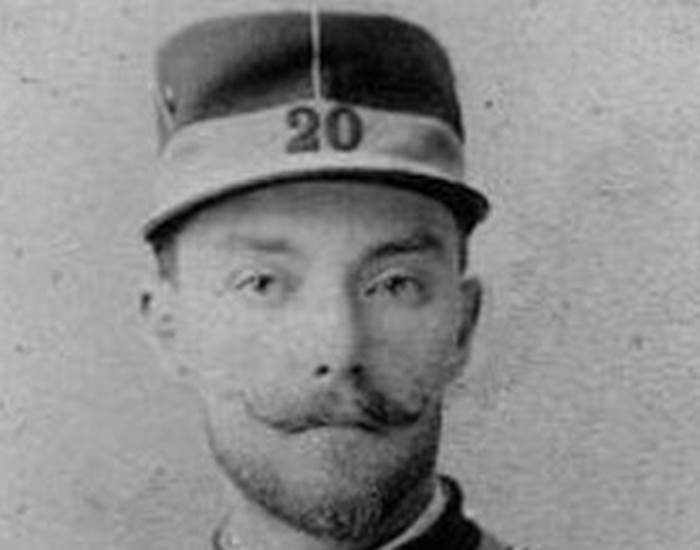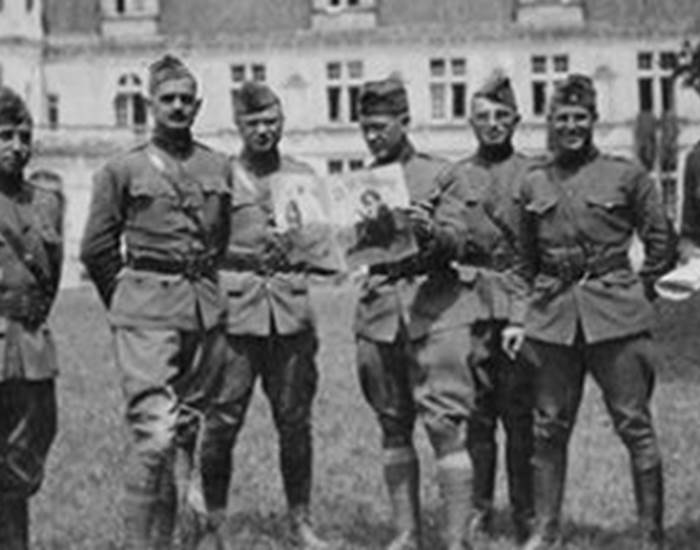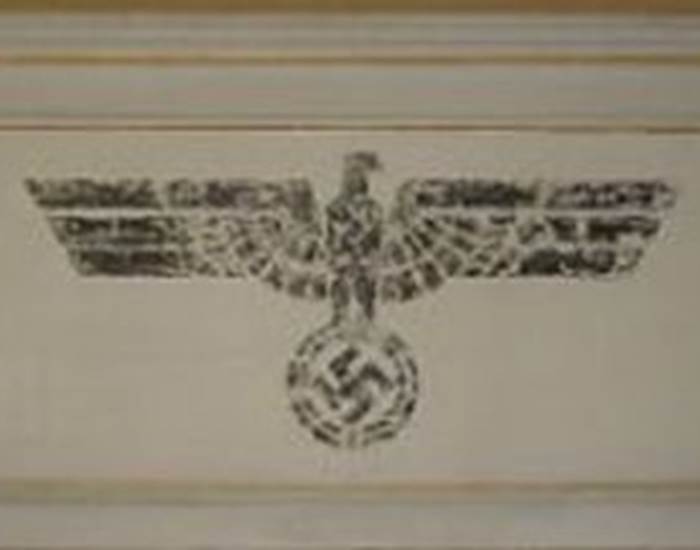The Amoncourt family and the lordship of Montigny
Let's start by imagining a fortified castle dating from the 12th century... Two hundred years had passed when the d'Amoncourt family, originally from the canton of Port-sur-Saône in Franche-Comté, emigrated to Champagne, in the diocese of Langres. They had three lordships there, including that of Montigny-sur-Aube. We are at the beginning of the 14th century. "Nec mors, nec vita" is the motto displayed on the coat of arms of the d'Amoncourt family, gules with a gold saltire (the red color of the shield crossed by a golden Saint Andrew's cross). The motto, taken from the epistle of Saint Paul the Apostle to the Romans, can thus be translated: "Neither death nor life [will be able to separate us from the love of Christ]." Thus the d'Amoncourts would give as many lay and ecclesiastical lords. The latter, according to tradition, are the cadets who, very young, enter the orders.
Jean V d'Amoncourt and the Renaissance
After having evolved alongside his uncle Claude de Longwy, cardinal of Givry and peer of France related to the king, Jean V d'Amoncourt became archdeacon of Langres then bishop of Poitiers. The bishopric then included about two thirds of the current Haute-Marne, half of the Côte-d'Or, a good quarter of the Aube, a quarter of the Yonne as well as part of the Haute-Saône, or 850 parishes spread over 15,000 square kilometers.
It is the 16th century. Influenced by his uncle and his travels in Italy, Jean V decides to bring the feudal castle of Montigny-sur-Aube up to date, helped by his brother René, master of waters and forests. The architect Jean Bullant, to whom we owe the castles of Petit-Chantilly, Écouen and a wing of the Louvre, is very fashionable at the time. His influence is visible on the exceptional castle chapel of Montigny as well as on the north facade of the main courtyard made up of 44 columns that are still visible. We must imagine the castle composed of a vast interior courtyard enclosed by three buildings and a wall, the whole forming a quadrilateral, thus taking up the plan of the initial stronghold. An engraving dated 1858, after the demolition of a large part of the property, gives an idea of the place at the time of Jean V, in full Renaissance.
A marquisate under Louis XIV
It was 1625 when Philiberte d'Amoncourt married Antoine de Barillon de Morangis, master of requests, appointed State Councilor and Director of Finances in 1648. In gratitude for her good and loyal services, Louis XIV elevated the lordship of Montigny-sur-Aube to a marquisate in 1697. A few years later, in 1724, the d'Amoncourt family ceded the castle of Montigny-sur-Aube to René Nicolas de Maupeou, chancellor of France under Louis XV. Upon his death, he bequeathed the property to his brother, lieutenant-general of the king's armies, who sold it in 1784 to Bénigne Joseph Vaillant, Count of Savoisy.
A devastating fire at the end of the 18th century
During the Revolution, the castle suffered significant deterioration, including the breaking of sculptures and coats of arms, as well as the destruction of the gatehouse. In 1794, a terrible fire seems to have ravaged three-quarters of the property, forcing Philippe Vaillant de Savoisy, son of Bénigne Joseph, to carry out major demolition work in 1817. He gave written evidence of this. Joseph Gustave Le Bas du Plessis, through his marriage to Philippe de Savoisy's daughter, became the new owner of the premises in 1862. Due to a reversal of fortune, their daughter Anne was forced to sell the estate in 1901, leading to the disappearance of the archives.
Major works at the beginning of the 20th century
André Martin, a great silk merchant from Lyon and brother-in-law of Édouard Aynard, member of the Institute and owner of the Fontenay Abbey near Montbard, became the purchaser of Montigny-sur-Aube. In 1902, he undertook major restoration work under the combined expertise of Édouard Aynard and the Dijon architect Javelle. The image of the castle was transformed, both externally and internally. This is what we still know today. While he opted for a restoration of the north facade and its decoration of superimposed columns, André Martin embarked on a vast transformation of the south facade, on the garden side. Previously sober in appearance, it was completely reworked in a neo-Renaissance style of great architectural quality.
During the world wars
In 1918, while enrolled at the artillery school in Montigny-sur-Aube, Harry Truman stayed at the château for several months. The American officer would become the thirty-third President of the United States in 1945.
The Germans, for their part, occupied the estate during the Second World War. They transformed the large living room into a kommandantur.
In 1961, under the ministry of André Malraux, the exterior of the Château de Montigny-sur-Aube, its park, and its chapel as a whole, were classified as historical monuments. Edmée Pierre Hermitte has been the owner since 1956. Upon his death in 1982, Mr. Mirmand bought the estate before selling it in turn, in 2002, to Marie-France Menage-Small, the current owner.
Listed as a historic monument
In 1961, under the ministry of André Malraux, the exterior of the Château de Montigny-sur-Aube, its park, and its chapel as a whole, were classified as historical monuments. Edmée Pierre Hermitte has been the owner since 1956. Upon his death in 1982, Mr. Mirmand bought the estate before selling it in turn, in 2002, to Marie-France Menage-Small, the current owner.






